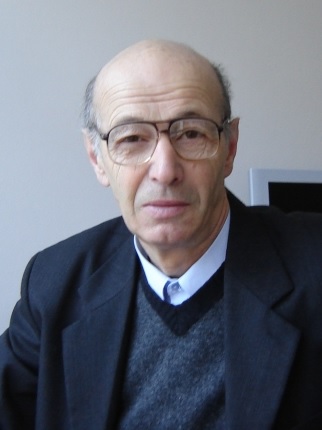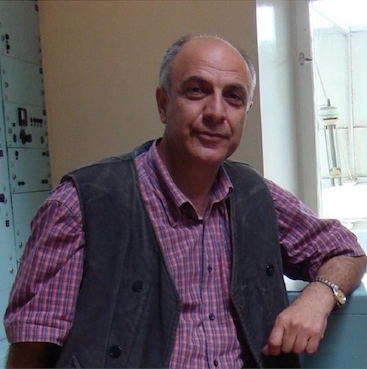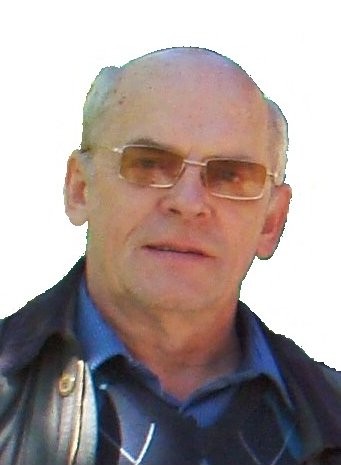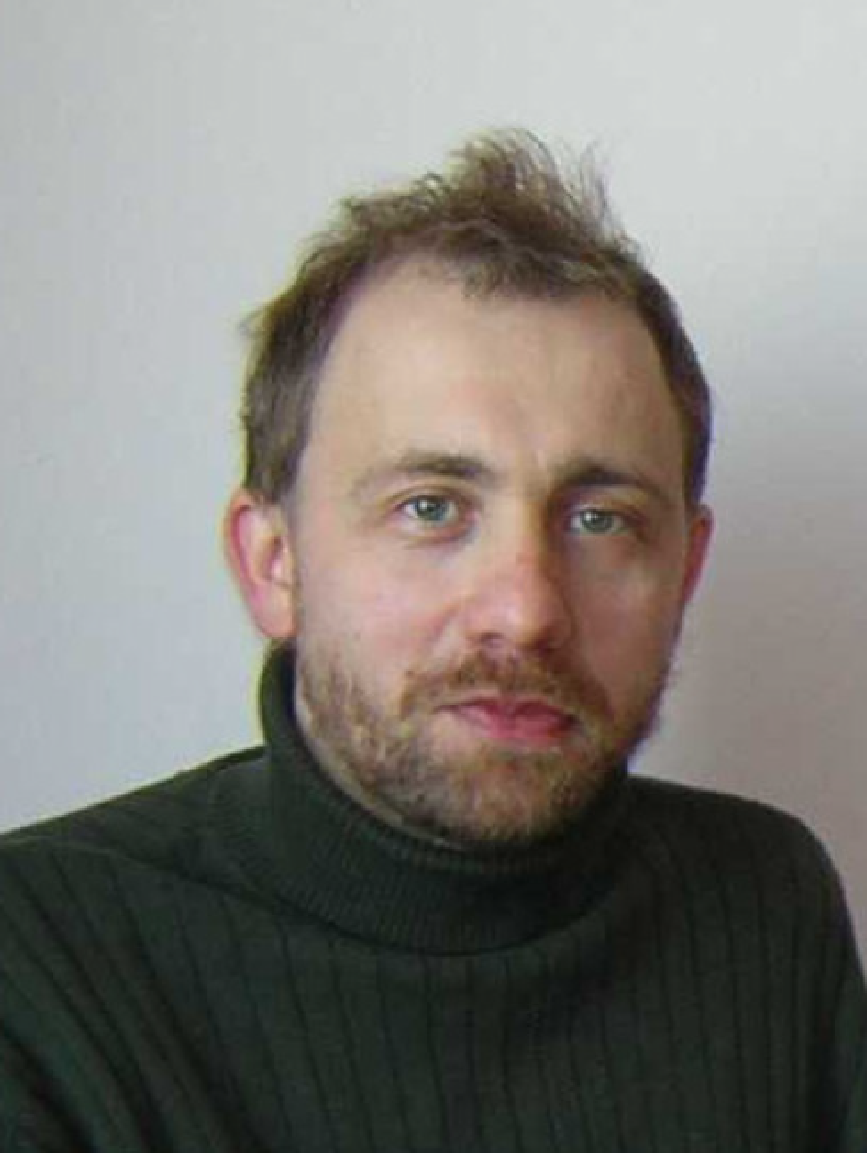

 |
|
|
|||||||||

On November 25, 2021, Eugene L. Chentsov, Doctor of Physical and Mathematical Sciences, Leading Researcher of the Astrospectroscopy Laboratory, passed away at the age of 85.
His life was associated with the Special Astrophysical Observatory from the very beginning of its formation. After graduating from the Ural State University in 1959, he was a post-graduate student and Researcher at the Crimean Astrophysical Observatory of the USSR Academy of Sciences. From 1965 to 1968 taught at the Astronomy and Geodesy Department of the Ural State University. In 1968, he came to work at the Special Astrophysical Observatory and worked his way up from a Junior Researcher to a Leading Researcher. Eugene L.Chentsov worked at the observatory for more than 53 years, he was always distinguished by an active life position. He was an outstanding scientist and a successful teacher and popularizer. His entire life is an example of the selfless service of science.
From the beginning of his work at the SAO, Eugene Chentsov began to conduct high-resolution spectroscopy of a number of white super- and hypergiants (Rigel, 6th of Cassiopeia, etc.) and, in collaboration with L.I. Snezhko applied model calculations to obtain kinematic cross-sections of their atmospheres and to solve related metrological problems. In the 1970's and 1980's, he actively participated in the research and improvement of the spectral instruments of the Big Telescope Alt-azimuthal (BTA) and in the development of methods of high-resolution spectrum reduction.
From the 1990's till now, his main works were related to hot hypergiants and LBVs of the Galaxy. He studied the non-sphericity and instability of their winds and their influence on star formation in the associations (6 Cas in Cas OB5, star No.12 in the Cyg OB2 association, HD 168607, and HD168625 in Ser OB1A). He found that the last two objects make a unique pair of the Galactic LBVs.
During these years, together with his colleagues, he studied medium-mass supergiants at the post-AGB evolutionary stage. The important effect of their "spectroscopic mimicry" for supergiants and hypergiants of great mass was revealed.
In 1978, he was awarded the silver medal from of the Exhibition of Economic Achievements, credits and awards from the SAO.
In 2016, Eugene L. Chentsov was awarded the title of the "Honored Scientist of Karachay-Cherkessia".
Eugene L. Chentsov was constantly teaching and popularizing the astronomy: students' practical training and astronomical schools for senior students in the observatory, adaptation of the STAR educational program, popular papers and lectures, and astronomical tourism. His devotion and love for the beauty of the night sky could not leave a single person indifferent. Eugene L.Chentsov said: "Look at the night sky every time you have the opportunity!". Look at it...
Colleagues and friends, feeling deep sorrow about this irreparable loss, express their sincere condolences to the family of Eugene Chentsov.
The memory of the outstanding scientist and worthy person Eugene L. Chentsov will forever remain in our hearts.
The team of the Special Astrophysical Observatory of theRussian Academy of Sciences
We regret to inform you that on July 31, 2021, at the age of 90, one of the founders of the Russian radio astronomy, the Full Member of the Russian Academy of Sciences, the Chief Researcher of the SAO RAS, Yuri Nikolaevich Parijskij, died.
Yuri N. Parijskij graduated from the Physics and Mechanics Department of the Moscow State University in 1955, and since 1955 devoted himself to astronomy at the Main (Pulkovo) Astronomical Observatory. From 1960 till 1969, he headed the Radio Astronomy Department of the Pulkovo Observatory of the Soviet Academy of Sciences. Later, he defended his Ph.D. thesis in 1962, and in 1969 defended his Dr. Sci. thesis. Since 1969, he was the Vice-Director of the Special Astrophysical Observatory (now SAO RAS). In 1979, he became the Corresponding Member of the Russian Academy of Sciences, since 1992-the Full Member of the Russian Academy of Sciences, and since 1997-the Chief Researcher of the SAO RAS.
Yuri Parijskij enthusiastically studied the methods of building large telescopes. He is a co-author and participant of the large projects: RATAN-600 and KVAZAR-KVO, under the leadership of Professor S.E. Khaikin, since 1958, he took an active part in the construction of the Large Pulkovo Radio Telescope (LPRT) and the first observations of radio sources. He conducted high-accuracy observations in the field of cosmology; in 1970-1980, he set a new low limit on the level of the CMB anisotropy, which resulted in the revision of the theory of galaxy formation.
Yuri N. Parijskij is one of the founders of the RATAN-600 radio telescope. In 1965, by decision of the Academy of Sciences of the USSR, he was named the "Responsible Scientist" for RATAN-600. Yuri N. Parijskij devoted a lot of time to its construction; and the first observations, carried out on July 12, 1974, became a great achievement of not only the Soviet, but also of the world science. Under his leadership, RATAN-600 implemented complex scientific programs: "Cold", "Big Trio", and "Genetic Code of the Universe". Yuri Parijskij's scientific interests were diverse and covered a wide range of instrument capabilities, ranging from the solar radio astronomy, solar system objects, galactic and extragalactic research. He paid special attention to work in the field of cosmology.
For his enormous contribution to the development of the radio astronomy in the country and fruitful scientific activity, he was awarded the medal "For Valiant Labor" in 1970, the Order of the "Badge of Honor" in 1975, the Order of Lenin in 1978, the Order "For Merit to the Fatherland" of the IV degree (1999). Yuri N. Parijskij was a member of the Radio Astronomy Council in our country and a member of the International Astronomical Council (IAU); was elected President of the IAU Commission No. 40 on the Radio Astronomy, President of the Radio Astronomy Commission of the Radio Union (IRSI). Yu. N. Parijskiy is the author of over 250 papers and two monographs: "Radio telescopes and radiometers" (N.A. Esepkina, D.V. Korolkov, Yu.N. Parijskij, 1973) and "Radio galaxies and cosmology" (O.V. Verkhodanov, Yu.N. Pariyskiy, 2009).
Yuri N. Parijskij devoted more than fifty years of his life to the RATAN-600 radio telescope. He trained more than one generation of radio astronomers at RATAN-600. Among his students, there are Dr. Sci., and Ph.D. working on various topics of radio astronomy. The name Yuri N. Parijskij will forever remain in the history of the world science.
His demise is a great loss for his family, friends, colleagues, students, and the entire Russian radio astronomy.
Yuri N. Parijskij will remain in our memory as an intelligent and charming person devoted to science, teacher and scientist, a person of great personal courage and the highest professionalism in work.
The team of the Special Astrophysical Observatory of the Russian Academy of Sciences
Being a highly moral person, Yuri Parijskij has always been true to his principles. He gained respect and authority among astronomers thanks to his great intellectual strength and erudition. Yuri N. Parijskij opened the beauty of science to young scientists. His sympathy, kindness, and high moral principles served as a guide for those around him. In fact, for all the years of work at the observatory, Yuri N. Parijskij served as a stability stronghold and a measure of high morality. Largely thanks to his activity, the SAO was able to withstand the difficult period of shock and reforms of the 90's and 2000's.
I consider Yuri N. Parijskij my great Teacher. I remember that in the spring of 1993, a distant and difficult year for the observatory, he invited me to his home in our native Bukovo village to talk about the future of the SAO. He offered me to shoulder the director duty then and promised to support me at the level of the Academy's management. Since then, we had discussed problems together countless times, and I always knew that if I needed advice and support, I had a reliable support.
Over the past three years, we have lost outstanding academic astronomers-pioneers, the authors of new scientific ideas, initiators of new directions – N.S. Kardashev, D.A. Varshalovich, Yu. N. Parijskij. Each of them left behind huge space for scientific research which will be explored by several generations of researchers. And in many ways, they were very similar: radiant personality, highest intelligence, and selfless devotion to science.
Few people manage to realize their research, organizational, and pedagogical tasks of great importance in life so wholeheartedly and purposefully, as Yuri Parijskij did. His work has always awakened thought, and triggered new research. We will keep in our hearts a good memory of this outstanding man, whose wisdom and endurance, honesty and justice, kindness and nobility won the recognition and respect of all, who were lucky enough to walk with him through life.
Yu. Yu. Balega, Vice-President of the Russian Academy of Sciences, Scientific Supervisor of the SAO RAS, Director of the SAO RAS in 1993-2015

After a serious illness, on June 1, 2021, a Senior Researcher, Candidate of Physical and Mathematical Sciences, Faik Adil oglu Musayev, passed away.
Faik Musayev was born in the mountainous village of Alibek-Kishlak (Azerbaijan), where he lived until 1974 and graduated from the eighth grade of the local school. Then he moved to Baku, graduated from senior school there, and entered the Physics Faculty of the Azerbaijan State University. From that moment on, the space entered the life of a young scientist forever: Faik Musayev joined the Space Research Institute of Natural Resources of the Azerbaijan Academy of Sciences, then was transferred to the Shamakhy Astrophysical Observatory, and a little later was sent to the SAO RAS as a visiting scientist. In 1995, Faik Musayev was hired by our observatory as the Head of the RSC "Coude-laboratory".
Instrumentation engineering became his scientific credo, and he achieved significant success in this area. The spectrographs created by Faik Musayev work in several observatories in Russia: in the SAO, at Terskol, as well as in astronomical institutes and observatories in Poland, Bulgaria, Turkey, and Azerbaijan. He put his whole soul, energy, and enthusiasm into his developments.
Colleagues and friends, deeply mourning this loss, express their sincere condolences to the family and loved ones of Faik Musayev.
The memory of a worthy person Faik Adil oglu Musayev will forever remain in our hearts.
The team of the Special Astrophysical Observatory of the Russian Academy of Sciences

Viktor L. Afanasiev, Doctor of Physical and Mathematical Sciences, Professor, Chief Researcher of the Laboratory of Spectroscopy and Photometry of Extragalactic Objects, passed away on December 21, 2020 at the age of 74.
His whole life was associated with the Special Astrophysical Observatory. After graduating from Kiev State University in 1970, he worked as the Head of the department laboratory of the KSU, served in the Soviet army. In 1973, Viktor L. Afanasiev joined the Special Astrophysical Observatory and rise through the ranks from the Senior Engineer and Junior Researcher to the Director and Chief Researcher of the SAO RAS. Viktor L. Afanasiev worked at the observatory for more than 47 years and had always been distinguished by an active life position. He was an outstanding scientist and successful organizer. His entire life path is an example of selfless service to science.
From the beginning of his work at SAO, Viktor L. Afanasiev took an active part in equipping the 6-m BTA telescope with modern light receivers and spectral equipment. He and his colleagues were the first in our country to develop and implement the methods of two-dimensional and multi-object spectroscopy at the telescope. For the cycle of works on "Development of digital television instruments for the study of extremely faint astronomical objects at the Large Azimuthal Telescope of the Academy of Sciences of the USSR", Viktor L. Afanasiev, as part of a team of the authors, was awarded the State Prize of the USSR in the field of science and technology in 1991.
His contribution to the study of galactic structures is invaluable. In the 1980's, Viktor L. Afanasiev, together with his colleagues, carried out comparative photometric and spectral studies of Seyfert and normal galaxies. The motions of gas towards the galactic center, which are responsible for "feeding" the active nucleus, were studied in detail. For a complex of works on the study of active galactic nuclei, Viktor L. Afanasiev was awarded the degree of Doctor of Physical and Mathematical Sciences.
As a result of the BTA study of the disks of spiral galaxies, Viktor L. Afanasiev and colleagues discovered giant gas vortices. For the work "Prediction and discovery of new structures in spiral galaxies" Viktor L. Afanasiev, as part of a team of the authors, was awarded the State Prize of the Russian Federation in 2003 in the field of science and technology.
Since 2005, Viktor L. Afanasiev and his collaborators at the BTA have carried out extensive polarimetric studies of active galactic nuclei, gravitational lenses, peculiar stars, and small bodies of the Solar System. He developed and implemented a new method for determining the masses of black holes in the nuclei of galaxies based on spectropolarimetry in broad emission lines.
Viktor L. Afanasiev is the author of more than two hundred and fifty scientific papers. The instruments developed and created by him are successfully used for astrophysical research at large and small Russian telescopes.
He successfully worked with the young and led them into an independent scientific life. Under his scientific supervision, six Ph.D. theses were completed and defended.
Viktor L. Afanasiev was awarded state awards: the Medal for distinguished work in 1981 and the Order of Friendship in 1999.
The memory of the outstanding scientist and worthy person Viktor L. Afanasiev will forever remain in our hearts.
The team of the Special Astrophysical Observatory of the Russian Academy of Sciences
One by one, a generation of people who created the glory of our observatory are leaving us. Viktor L. Afanasiev did a lot to be replaced by young researchers-here he managed to do more than others.
Today, together with Viktor's family and friends, we mourn the heavy loss. The mountains mourn, among which he lived all his best years, the telescopes mourn, to which he gave his mind and his soul. The sky into which he has gazed all his life will receive him.
We will all remember Viktor L. Afanasiev as a caring person who fiercely defended his scientific views, a person who often goes against the conventional wisdom, a person who is a generator of new ideas, a person whose name will always be associated with the history of our observatory and the history of the Russian astronomy.
Yu. Yu. Balega, Vice-President of the Russian Academy of Sciences, Scientific Supervisor of the SAO RAS, Director of the SAO RAS in 1993–2015

With great regret, we inform you that on April 21, 2020, in the 86th year of life, our colleague, the member of the Russian Academy of Sciences, Chief Researcher of the Joffe Institute, Dmitry Alexandrovich Varshalovich passed away.
The news of the death of Dmitry Alexandrovich echoed with pain in our hearts, especially of those who were lucky to communicate and work with this wonderful real man. This fully applies to our team. Dmitry Alexandrovich worked for many years as a member of the Russian Telescope Time Allocation Committee of the Russian Academy of Sciences, which was involved in the planning of the work of Russian optical telescopes, the examination of applications, and the allocation of the observation time. Dmitry Alexandrovich worked for more than 9 years as part of the dissertation council of the SAO RAS in the specialty 01.03.02 – "Astrophysics and stellar astronomy". And finally, Dmitry Alexandrovich, was a permanent member of the Supervisory Board of the "Astrophysical Bulletin" journal published in the Observatory since 2007.
Dmitry Alexandrovich was certainly a world-class scientist both in the scope of his interests and in the depth and severity of his approach to solving scientific problems. His unique quality was a combination of gentleness, modesty, intelligence, and staunchness in upholding his position and principles. He felt the huge difficulties of wartime. He rarely shared his memories, but he never forgot the trials and the people who helped him.
It is very important that Dmitry Alexandrovich influenced the scientific community not only with his striking results, but also through the formation of personalities capable of continuing to make science in new, difficult conditions. His life experience, personal example, enthusiastic attitude to science, kindness, intelligence will allow us to maintain the traditions necessary for the continued existence of domestic science.
His contribution to the development of scientific programs carried out at the 6-m BTA telescope is widely recognized. Thanks to the initiative and conviction of Dmitry Alexandrovich, a spectroscopic project was implemented at the SAO RAS which has been the basis for several scientific areas for more than 20 years.
Dmitry Alexandrovich was and will remain the example both for his students and for researchers not concerned with the problems of theoretical physics and astrophysics.
We will keep the memories of meetings and cooperation with Dmitry Alexandrovich as the brightest moments of scientific life.
The members of the SAO RAS staff express their deepest condolences to the relatives and friends of Dmitry Alexandrovich, to the entire staff of the Ioffe Institute in connection with the death of one of the oldest employees of the institute, an outstanding scientist of the twentieth and twenty-first centuries.
He will remain in our memory as being science-devoted, intelligent, and charming person, teacher, and scientist.
Staff of the Special Astrophysical Observatory of the Russian Academy of Sciences

On April 5, 2020, at the 56th year of his life, the famous Russian radio astronomer, doctor of Physics and Mathematics, Leading Researcher of the Special Astrophysical Observatory of RAS, Header of the Group for study of galaxies and cosmology Oleg Vasilievich Verkhodanov suddenly died of a heart attack.
He was born on March 17, 1965 in the city of Novgorod (now – Veliky Novgorod). In 1982-1987, Oleg studied at the Leningrad State University (now St. Petersburg State University). From 1987 until his last days, he worked at the Special Astrophysical Observatory of the Academy of Sciences of the USSR (since 1991 – SAO RAS); in 1989–1993 he studied at the part-time doctoral program of SAO RAS under the supervision of Yu.N. Parijsky, the member of the Academy of Sciences. In 1993, Oleg V. Verkhodanov passed his Ph.D. defense on "Methods of investigation of radio sources in the near-zenith mode of RATAN-600." In 2002-2004, he held the position of a Visiting scientist at the Theoretical Astrophysics Center (Copenhagen, Denmark). In 2005, he defended his doctoral thesis "Methods and results of observational radio cosmology." Oleg was an active member of the International Astronomical Union.
Oleg V. Verkhodanov was a brilliant scientist and a wonderful educator – he systematically gave lectures for students and schoolchildren, organized scientific schools and conferences, supervised graduate students, and helped them start an independent scientific activity. He was the main organizer of astrophysical schools and olympiads of school students organized by SAO RAS, including the first astrophysical school "Traectoria" of the Traectoria Foundation (2016–2019). Oleg independently and in collaboration with his colleagues has published more than 200 scientific papers in up-to-date research areas of observation radio astronomy and cosmology. He was the author and scientific editor of several books, a number of scientific and popular science papers on the general problems of radio astronomy, research on radio galaxies and CMB. In recent years, Oleg gave more than 50 public lectures annually, participated in discussions on relevant issues of modern astronomy.
Oleg V. Verkhodanov in collaboration with Yu.N. Parijsky, the member of the Academy of Sciences, published the monograph "Radio galaxies and cosmology" (2009). It was mainly devoted to the observational data interpretation including the results of many years of research on radio galaxies within the "Big Trio Project" carried out jointly with the RATAN-600 radio telescope, the 6-m BTA telescope of SAO RAS, and the VLA NRAO radio interferometer (USA). An important result of this review is the discovery of one of the most distant radio galaxies in the Universe, RCJ0311+0507, at the redshift of z=4.514 containing a supermassive black hole in the nucleus.
Oleg V. Verkhodanov developed the software package to analyze the surveys and discrete radio sources observational data at the RATAN-600, explored the possibilities of this telescope as a co-phased array, developed phase analysis algorithms and the GLESP software (co-authored) based on his new sky-pixelization method for high-precision studies of CMB radiation on the whole sphere. Together with his colleagues, he discovered the non-Gaussianity of the first experimental CMB map which was subsequently confirmed by other authors, and proved that it is due to the Galaxy radio emission contribution, estimated the ages of distant radio galaxies, showed their agreement with the standard cosmological LCDM model. Oleg V. Verkhodanov studied the contribution of radio galaxies of different populations to the cosmic microwave background, created new catalogs of radio sources, proposed a method for estimating the average continuum radio spectra for quasars in different cosmological epochs to identify their possible distortion due to the number of mergers and "ignition" of radio sources, and their own evolution.
Oleg's contribution to radio astronomy research is invaluable. He was an observer, theorist, mathematician, programmer, and teacher. Oleg V. Verkhodanov created several unique software packages for working with the radio astronomy data; they are used by observers and theorists. Under his direct supervision, the CATS astrophysical catalog support system has been created and developed; it is actively used by the world astronomical community. Using the developed instruments, he conducted cross-identification of hundreds of thousands of sources in various wavelength ranges.
The works of Oleg V. Verkhodanov have been repeatedly awarded. He was a laureate of the "Outstanding Scientists. Ph.D. and Doctors of Sciences of the Russian Academy of Sciences" (2008–2009) program of the Support of Domestic Science Foundation, laureate of the Dmitry Zimin Dynasty Foundation Prize (2010–2012) within the support program for young physicists – Doctors of science, winner of the "Best reviews and articles published in Uspekhi Fizicheskikh Nauk [Physics – Uspekhi] (UFN) journal in 2016" competition with his paper "Cosmological Results of the Planck Space Mission. Comparison with WMAP and BICEP2 Experimental Data."
Oleg V. Verkhodanov was a productive scientist in the field of analysis and modeling of experimental data of the CMB and radio cosmology measurements. The whole astronomical community will remember Oleg as a deep researcher who has done exceptionally much for the Russian radio astronomy, and whose works will be included in the golden fund of the world astrophysics. Once Oleg said: "All people in childhood look at the starry sky and admire, but not all remain. I remained..." And this is indeed true – he stays and will remain in our hearts forever.
|